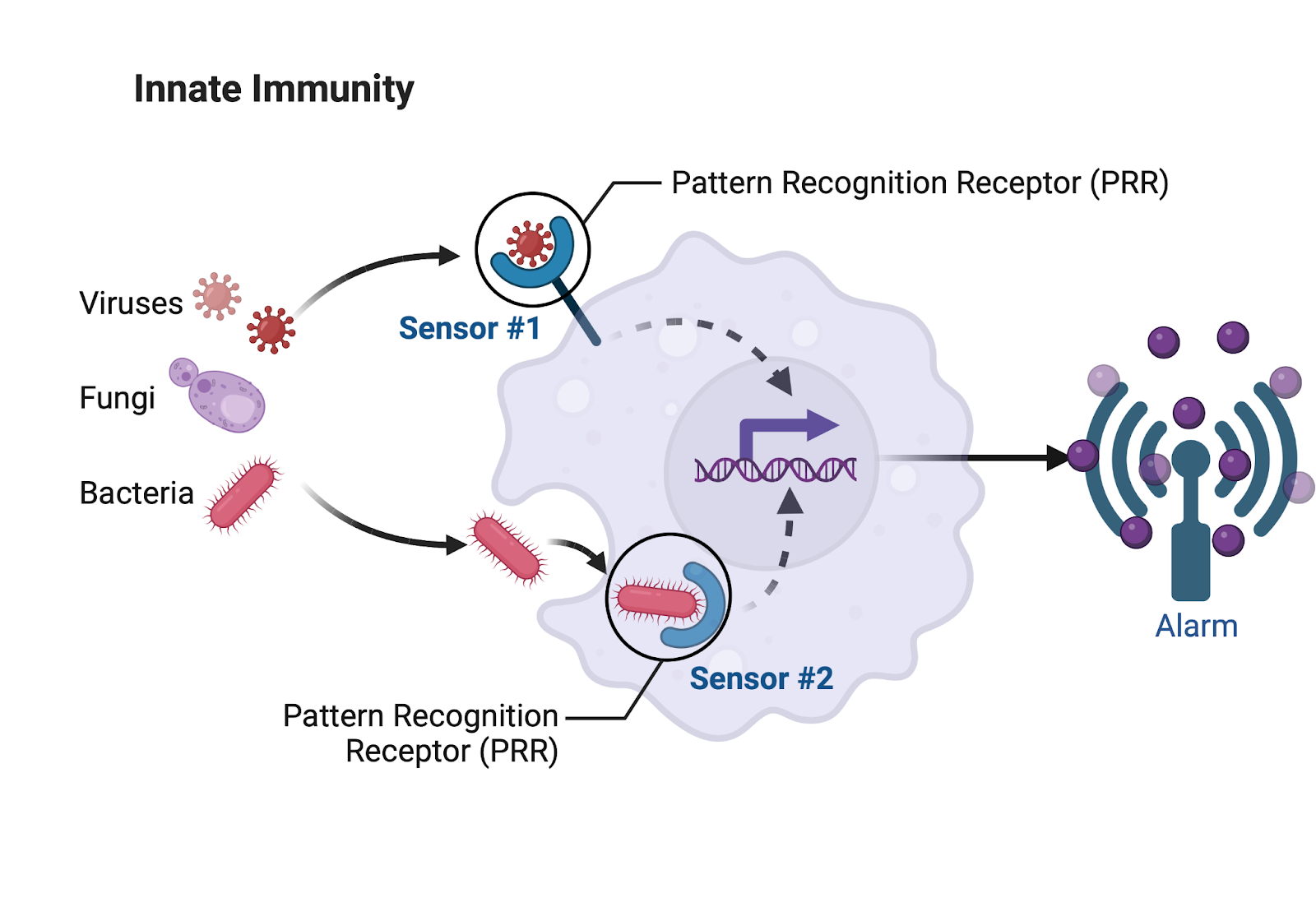by Sophie Mendell
Fire brings telltale signs – choking clouds of smoke, the smell of char, and intense heat if you’re too close. To protect ourselves and others from the dangers fires possess, we’ve invented the smoke detector. As its name suggests, the smoke detector identifies only one of these telltale signs. Further, it’s up to the person hearing the alarm to respond and protect themselves. But what if the humble smoke detector could do more? Imagine if a smoke detector could recognize all the signs of a fire, and respond to it. Rather than just alerting you to danger, what if it could remove you from danger, call 911, and release enough water to quench the blaze without ruining all your possessions? This would be a pretty powerful tool that most would pay extra for! Luckily for us, our body has tools just like this super smoke detector that we get for free. However, these tools in our body don’t detect fire, they detect invading viruses, bacteria, and damaged tissues.
Known as pattern recognition receptors (PRRs), these mini super smoke detectors are evolutionarily designed to recognize patterns shared by things that pose a danger to us. Bacteria, viruses, and even damaged tissues share unique signs called pathogen-associated molecular patterns (PAMPs) or danger-associated molecular patterns (DAMPs). These signs exist at a tiny, molecular level and help alert the immune system that something is wrong.

Figure 1. Pattern recognition receptors (PRRs) of the immune system can detect several different types of invading pathogens, like viruses or bacteria, before undergoing cellular changes that allow them to signal an alarm! Figure adapted in BioRender from.
Detecting PAMPs and DAMPs by PRRs is fundamental in many life forms. From people to sharks to moths to corn, PRRs are found across many life forms. Activation of a PRR by a PAMP or DAMP communicates an alarm signal to the innate immune system. Cell types across your immune system express a variety of PRRs to detect several different types of signals. Together, they can mount a coordinated attack to ward off invading pathogens or gather resources to heal hurt tissues.
Luckily for us, we don’t have to think about a response. We don’t even have to know that PRRs have been triggered! We just get to keep existing while our body protects us from internal and external threats. Without PRRs, a mere paper cut could be life-threatening. Indeed, people who have deficiencies in subtypes of PRRs suffer from abnormal development and susceptibility to common ailments. However, these wonderful tools have been implicated in various diseases. When there are too many PRRs present, cancer or skeletal issues have been shown to occur. Despite this intriguing connection, we are better off for our super smoke detectors than not!
